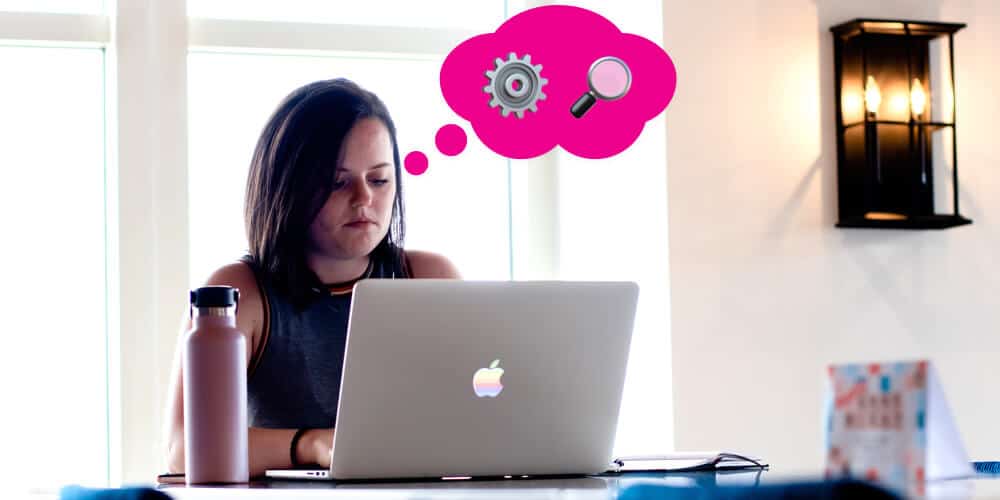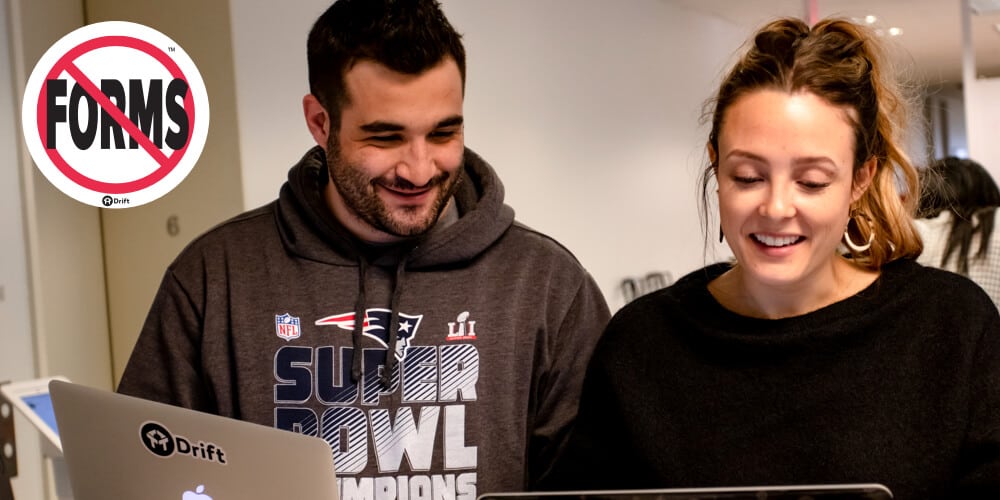
Website optimization techniques tend to focus on mobile-friendliness, technical SEO, and CTA placement. These are all important factors, but they fail to go deeper into who (exactly) is coming to our website, and what they plan to do when they get there.
Tons of optimization tips are about increasing your discoverability to new traffic and then immediately converting them. But what about longer sales cycles, where prospects move through multiple stages of awareness before they’re ready to buy?
How do we optimize our websites for the high-intent buyers who are considering a purchase?
Just working to bring in more low-intent leads while failing to connect with and convert the high-intent traffic is a big mistake. With these seven tips, you’ll learn to cater your site to those who are ready to buy, or almost there.
How website optimization techniques are affected by intent
High-intent website traffic is made up of prospects who are either ready to buy or are researching your product further to settle any last requirements before they can get it approved.
Essentially, high-intent website visitors are there to vet your product against their known needs and to take the critical next step towards purchase.
Gidi Pridor, VP of Marketing at TravelPerk, urges us to dig even deeper:
It’s important to further segment the “high intent” group. Different “high intent” prospects have different preferences and will be willing to engage with you in different ways. Picture the hands-on type who likes to try things herself before looping in the right people for further discovery. The right CTA for her would be “Try now.” Then there’s the scholar type who wants to learn about the correct requirements and avoid mistakes. He would want a buyer’s guide or an RFP tool comparison. Someone else who was equally meticulous but more of a talker would go straight for a demo appointment and come prepared with questions.
The best strategy is to combine these multiple CTAs and A/B test them to improve positioning and weight. This way you cater to more types and you don’t lose the high-intent leads who don’t want to sit through a demo.
So how can we cater to high-intent visitors with a multitude of learning styles and buying quirks? Let’s explore.
1. Lead with the full value of your solution
To win over high-intent website visitors, you need to master your messaging. If you fail to showcase the outcomes of your product and instead focusing on the features, you’ll inspire your high-intent website visitors to compare your features against your competitors.
Your homepage, demo request pages, and other high-intent pages are not the place for all of the nitty-gritty details about what your product does.
Instead, you need to optimize these pages with the following:
- Outcomes and results – What are the ultimate business outcomes of your product or service? What is the Hero’s Journey transformation for the buyer and/or user?
- Use cases – How do customers use your product? What can they achieve?
- Authority, trust, social proof – Customer reviews, rating averages, case studies, testimonials, tweets, press logos, and customer logos. Use what you have where it makes sense.
- Unique selling propositions – Know what sets your product or service apart from competitors and spell it out clear as day.
If you’re unsure whether your messaging is 100% on point, d customer research (ask these questions) and competitor research instead of guessing what you should say.
2. Test all of your CTA copy (not just the buttons)
When people think of a call to action, they typically think of the button copy. Did you know that a call to action is actually made up of the copy surrounding the button too?
This can be the headline used directly above a CTA button, as well as any small font right below it. And if you’re using any sort of imagery with your CTA, you’ll want to test that too. Here’s an example of all of the copy associated with a CTA on the bottom of a homepage. This example is from Showdigs, an app that lets busy property managers request help for rental showings from real estate agents.

It’s important to test all of these elements (not just the CTA button) because they all affect whether or not a visitor clicks on the button. These elements all work together.
Remember to test which buying styles you are catering to, in addition to the copy within each element. You might want to test a trial against a buyer’s guide for your transitional CTA.
3. Use no forms or short forms
Many B2B marketers feel strange requiring website visitors to fill out a long-form to receive valuable information. They wonder, shouldn’t this guide be freely available?
If you’re feeling remorseful about all the forms on your website but don’t want to sacrifice the ability to convert leads, don’t fret. You can still engage with high-intent visitors without making them fill out a lead magnet form.
There are two options for better catering to these visitors in a way they’ll appreciate. The first option is to use chatbots instead of forms. Conversational Content drives double-digit engagement rates, instead of the standard 1 – 2% opt-in rates of lead forms.
If you can’t get buy-in for chatbots at this time, the second option is to make your form as short as possible. Require a work email address only, and then have an assistant enrich the data with company size and job title.
4. Implement a chatbot strategically
Implementing chatbots that engage high-intent website visitors in valuable conversations can’t be done if the chatbot scripts are pointless or obnoxious.
So where should you implement chatbots? And how do you write them?
Chatbots should be triggered on (you guessed it) your high-intent pages like your homepage, your pricing page, and your resource landing pages.
As for what to write, you need to have a goal and a purpose for everything you ask – otherwise, it’s just noise. For example, you could turn your frequently asked questions into a chatbot on the pricing page to help address anything that might be keeping someone from getting started.
The flow would be:
- Do you have a question?
- Ability to select yes or no
- Yes → Do you have a question about…? (ability to select the top 3 topics)
Essentially, the goal here is to engage with someone in a highly specific, helpful way before a Conversation Development Representative takes over the conversation.
Other goals for chatbot conversations would be to segment by intent, guide visitors deeper down your funnel, or to educate them on a new game-changing feature.
5. Write for the right persona
Most B2B companies have multiple personas. There’s the person who uses the product, the person who decides to buy it, and the person who pays for it. Sometimes there are just a couple buyer personas but multiple user personas across different departments and use cases.
In blog posts and guides you might target other customer personas, but on your high-intent pages, you need to cater to the decision-maker while still showcasing how the product helps everyone involved.
No one wants to purchase a product that doesn’t meet everyone’s needs or that frustrates certain teams. Include copy on your site to show the value for everyone who will be using it. But from the overarching messaging story and the Hero’s Journey, you most likely need to showcase the outcomes that await the decision-maker, who’s interested in productivity increases, cost savings, speed to deal close, or other results.
6. Put high-intent keyphrases in web pages and landing pages
In a world of rising advertising costs, we all want more organic search traffic. It feels great when one page or post drives quality traffic to your site over and over and over again.
To get more organic traffic from high-intent website visitors, you need to put the right keyphrases in the right place.
Save problem unaware keyphrases like “top tips for office managers” for your blog posts. On your homepage or persona pages, go for very high-intent keyphrases like “conversion tracking software” or “PR firm for healthcare.”
Why? You don’t want to waste the opportunity to engage with someone who is actively looking for your solution. An optimized webpage content using the other tips mentioned here can likely do a better job than a blogpost can.
7. Get your homepage ready to sell
Finally, you need to treat the homepage of your website like a 24/7 salesperson. It’s what will convert prospects who have already been considering your product after having heard of it from a blog, an ad, or a conference.
In addition to the right messaging, conversation chatbots, and optimized CTAs, your homepage needs to take care of things that any smart salesperson would.
Include these on your homepage as well:
- Quality agreements to alleviate fear – What do prospects need to know to feel safe buying from you? Mention great support, personal onboarding, or something similar.
- Resources for more info – For people who are on your homepage, but not quite ready to make the leap, you need to give them the right next action. A transitional call to action can offer a buyer’s guide or a link to a features page without directing attention from the main ready-to-buy (ready-to-try) CTA.
The best website optimization strategies aren’t the little hacks or tricks. Digging into who you’re speaking to and why offers greater uplift.
As your team works to create content that attracts problem-unaware prospects and bring them deeper into your funnel, you need to make sure you’re still catering to high-intent traffic.
Want more tips on how to personalize the B2B buying experience? We break it down here.
Dayana Mayfield is a B2B SaaS copywriter and content marketer who lives in Northern California. She loves data-driven marketing and storytelling alike.
Editor’s Note: This is a guest post. Interested in contributing content to the Drift blog? Email Molly Sloan at msloan@drift.com.






